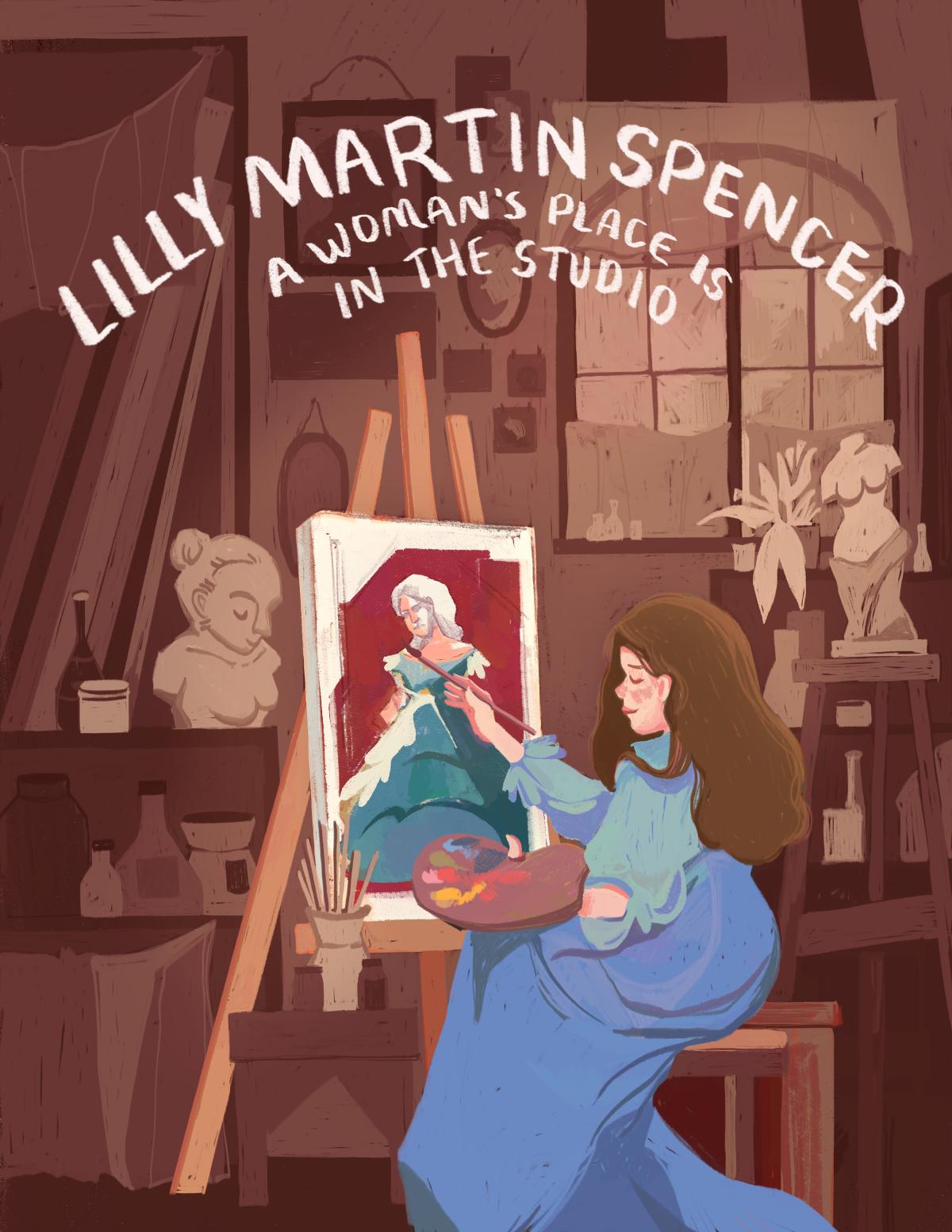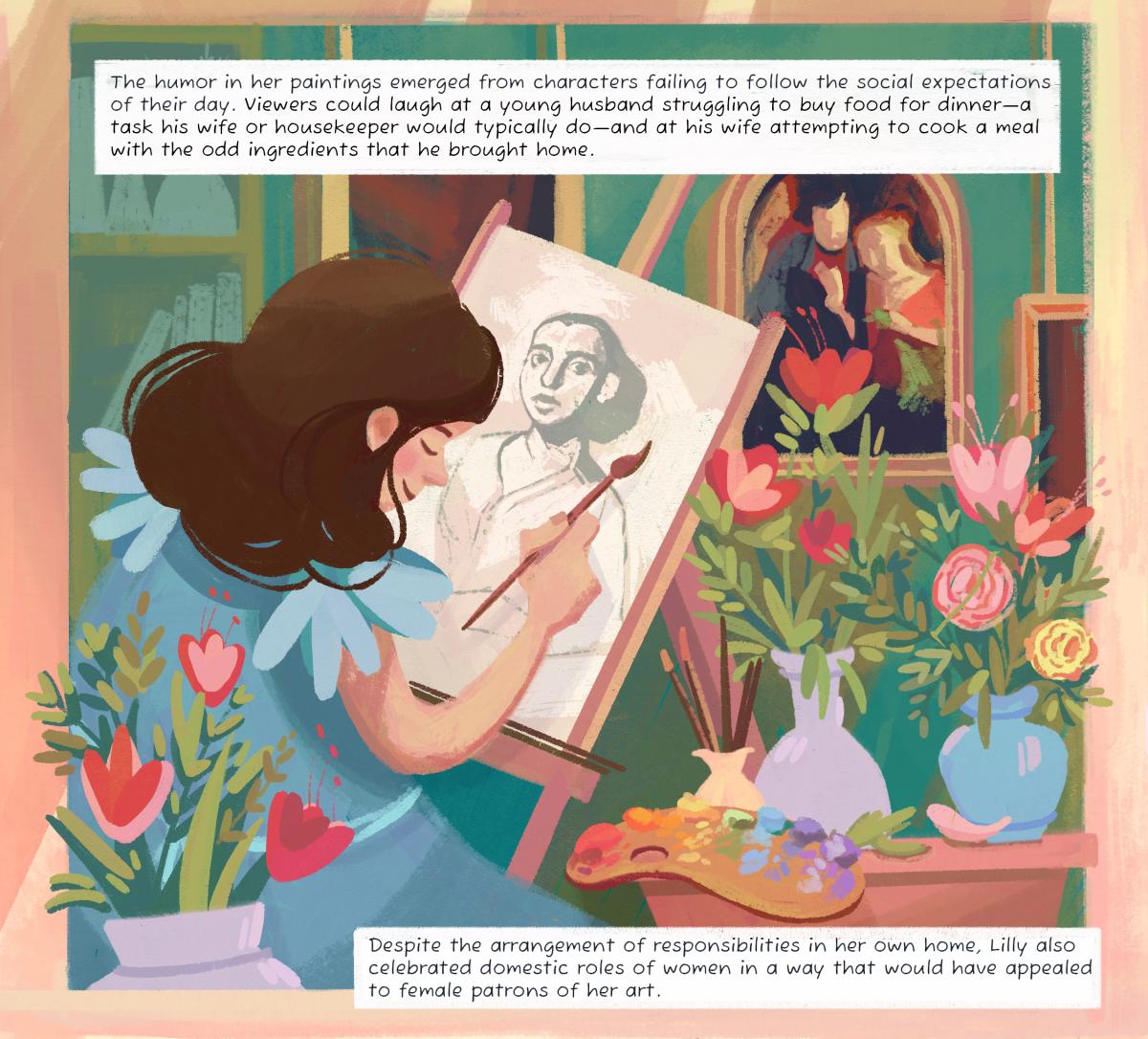
Lilly Martin Spencer was born in England in 1822. At the age of eleven she moved with her family to Ohio and was raised on a farm in Marietta. Her parents were progressive thinkers who supported women’s rights and Lilly’s emerging talents as an artist. They even let her paint portraits of her family on the walls of their farmhouse, artworks that gained public attention.
Sami Sulzer, a student-illustrator at the Ringling College of Art and Design, did a remarkable job rendering Spencer’s life, beginning with the cover showing Spencer working in her studio on a painting, We Both Must Fade (Mrs. Fithian), an important work in SAAM’s collection. All else but the artist and the painting on the easel are rendered by Sami in strokes of bold color—everything else is neutral.
The web comic progresses through Lilly’s marriage to Benjamin Rush, and the birth of their thirteen children, only seven of whom survived into adulthood. Sami handles this detail with amazing sensitivity, creating a moving family portrait of both joy and loss. It’s a startling visual.
Lilly, Benjamin and their family moved to New York so Lilly would have a greater audience and market for her work. Through the sale of her work, Lilly became the breadwinner for the family. She gained recognition and acclaim for her genre paintings that often portrayed scenes of daily life at home. These detailed domestic scenes were often humorous, sometimes reflecting her own life, which turned convention on its head. Benjamin quit his job as a tailor and became a stay-at-home dad. Her paintings sometimes featured husbands trying to do work that was traditionally assigned to women, often to comic effect.
The connection between artist and illustrator that Sami mentions above is deep and heartfelt and continues through the rest of the comic. Some pages riff on finished artworks and display a wall of Lilly’s paintings. The comic ends poignantly with an image of Lilly’s studio, and in a way, brings us back full circle to where we started. Unlike the cover image, Lilly is now absent, but her presence is represented by images from her life, including a palette and brush both dripping to the floor with paint —perhaps a stand-in for loss. The page references the words Lilly once spoke, “A Woman’s Place is in the Studio.” Lilly Martin Spencer continued to paint until her death in 1902 at nearly eighty years of age.
This comic is part of a series Drawn to Art: Tales of Inspiring Women Artists that illuminates the stories of women artists in the collection of the Smithsonian American Art Museum. Inspired by graphic novels, these short takes on artists’ lives were each drawn by a student-illustrator from the Ringling College of Art and Design.
We invite you to read the comic and share it with your friends and young people in your life.





















